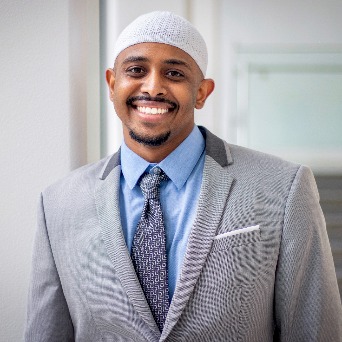
SaidAhmed SaidAhmed is a senior computer science major and an involved student leader. Photo provided.
Discovering virtual and augmented reality gave senior computer science major and passionate creative SaidAhmed SaidAhmed the best of both worlds.
SaidAhmed, who discovered the possibilities of programming at just 11-years-old, originally wanted to be a filmmaker. But when he discovered the enhanced storytelling capabilities of virtual reality (VR) and augmented reality (AR), he was immediately drawn to its ability to educate others.
“Virtual and augmented reality can tell real stories,” says SaidAhmed. “It has endless possibilities in education, mental health, and the preservation of history.”
He is specifically interested in the junction where creativity, computer science, and culture meet.
SaidAhmed was born in Cairo, Egypt, and he and his family moved to America when he was 5-years-old. He has stayed connected to his Sudanese heritage, and his experience as an immigrant and as a big brother to his brother with Down syndrome molded SaidAhmed.
“My little brother is a dancer. He loves to dance, to rap, and seeing him always being himself taught me to do the same,” he says. It also made SaidAhmed want to find a way to show others the reality of people who are different from them.
“VR/AR can show people what life is like as a person with Down syndrome. It can show them what it is like to be a person of color, an immigrant, the possibilities are endless,” SaidAhmed says.
VR is a tool that can be wielded to inspire real change, and SaidAhmed hopes to one day be a part of it and to be a role model to future leaders and difference-makers in STEM. He wants to show people who may not see themselves represented in the field that there are no limits to what you can do.
“Diversity in STEM is so important,” he says. “It’s like when I watched television as a kid. I watched a lot of superhero shows, but I never imagined myself as a superhero. They were all attractive white men, and I didn’t fit that mold. In my education, growing up I didn’t have Black teachers, and I didn’t have a Black professor until this past semester, Professor Tessema Mengistu in computer science.”
SaidAhmed sees Black representation in STEM and other impactful roles as essential to bringing more into the field. “Diversity is so powerful, there are so many amazing people who can change the world, but they can doubt their abilities because they don’t see people like them in those roles,” he says.
Building representation is part of the reason SaidAhmed is an avid student leader. He is the president of the Mason chapter of the National Society of Black Engineers, co-president of the Sudanese Student Associate, and secretary for Alpha Phi Alpha Fraternity, Inc. at Mason.
“Mason is such a diverse school, and I’m glad I get to be a part of organizations with people who are of Afro-descent or Arab descent,” he says. “We all help each other succeed.”
And success to SaidAhmed means using every skill and experience at his disposal to make a difference. “To make real change, to change the world, we have to expose the true reality of diverse people’s lives and also show people what’s possible.”
